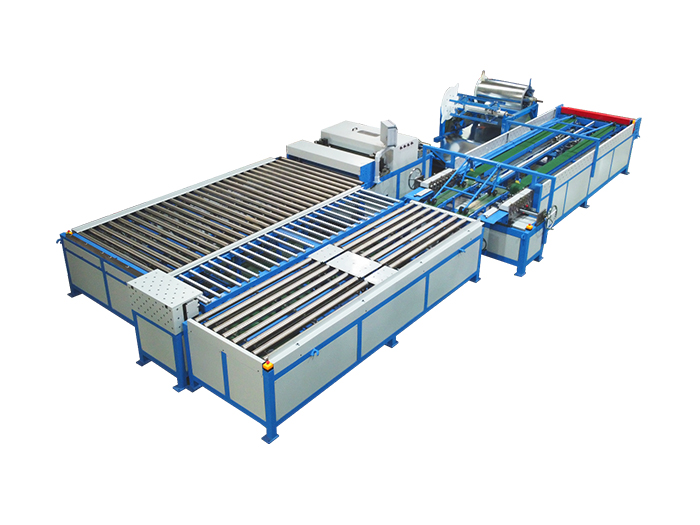Double shaft shredders have become indispensable in waste management, recycling, and industrial material processing. Known for their durability, versatility, and ability to handle high volumes of solid waste, these machines break down everything from plastics and rubber to wood, metal scraps, and municipal waste. By employing two counter-rotating shafts equipped with sharp blades, double shaft shredders achieve consistent size reduction while maximizing efficiency and minimizing operational interruptions.
However, effective operation and long-term performance are only guaranteed when operators follow strict guidelines. Proper installation, cautious operation, and routine maintenance all play critical roles in ensuring that double shaft shredders remain safe, reliable, and efficient.
Wuxi Songhu Xinrui Machinery Co., Ltd., a professional manufacturer of PE millers and PVC crusher equipment, also provides advanced shredding solutions that reflect high standards of engineering and practical usability. Their experience in developing heavy-duty machinery emphasizes the importance of structured operation and disciplined maintenance routines.
This guide explores in depth how to operate and maintain double shaft shredders to achieve optimal results.
Understanding the Function of Double Shaft Shredders
Double shaft shredders are designed to handle tough materials that single-shaft or lightweight shredders cannot process effectively. Their defining characteristic lies in their dual counter-rotating shafts. Each shaft carries cutting blades that intermesh with one another, gripping and tearing materials into smaller pieces.
These machines are widely applied in industries such as:
Solid waste management and recycling
Plastic and rubber processing
Electronic waste dismantling
Wood and paper recycling
Metal and scrap reduction
Unlike crushers or grinders, double shaft shredders focus on shearing and tearing rather than fine grinding. This distinction makes them suitable for pre-processing bulky waste streams before secondary treatments.
Preparing the Worksite for Operation
Before starting the shredder, the environment must be organized to reduce risks and enhance workflow efficiency.
Key requirements include:
Stable flooring: Ensures that heavy machinery operates without vibration hazards.
Clear work zones: Prevents accidents by keeping tools and unnecessary materials away from moving parts.
Proper lighting: Allows operators to monitor machine performance and detect irregularities quickly.
Ventilation systems: Help manage dust, fumes, or odors generated during shredding.
Wuxi Songhu Xinrui Machinery Co., Ltd. stresses that preparation is fundamental to machine reliability and operator safety.
Selecting Materials Suitable for Shredding
Even though double shaft shredders are versatile, not all materials are suitable for processing. Feeding the wrong type of material can damage blades, overload motors, or reduce efficiency.
Commonly accepted materials include:
Plastics such as PE, PVC, and PP
Rubber products including tires and seals
Wood scraps, pallets, and furniture waste
Paper, cardboard, and textile waste
Light metals like aluminum cans and profiles
Operators should avoid feeding materials that are too hard, chemically reactive, or excessively large without pre-treatment. This practice prolongs machine life and prevents costly downtime.
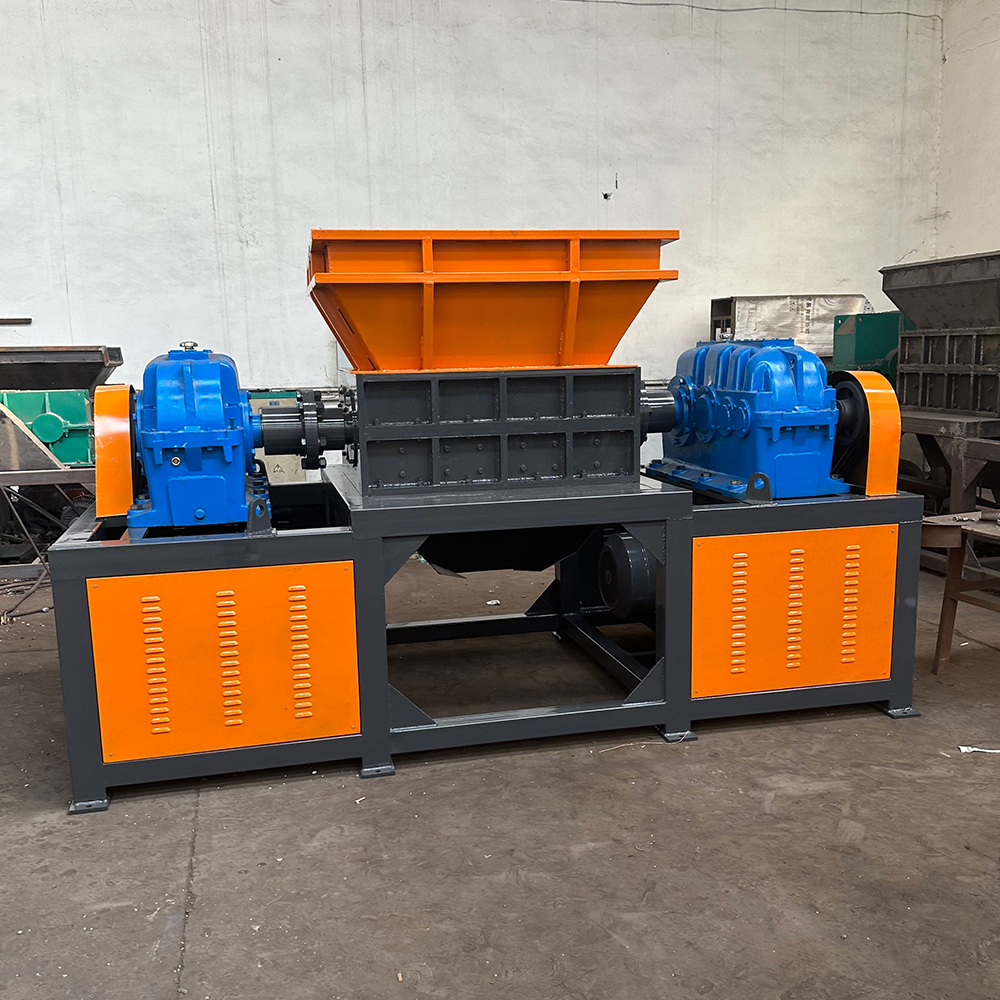
Starting the Shredder Safely
When powering up the machine, operators must follow a precise sequence. A safe start-up routine ensures that all systems are functioning properly before full load operation begins.
Procedures typically involve:
Checking electrical connections and control panels
Ensuring that the emergency stop switch is operational
Running the shredder without load to confirm smooth rotation of shafts
Gradually introducing small amounts of material for initial processing tests
These measures not only protect the machine but also give operators confidence that all components are working correctly.
Feeding Techniques for Maximum Efficiency
The way materials are fed into the shredder significantly affects output quality and operational stability. Proper feeding ensures uniform shredding and prevents shaft jamming.
Best practices include:
Feeding materials at a steady, moderate rate
Avoiding sudden large loads that strain the motors
Using conveyors or hoppers to automate feeding when possible
Monitoring feed consistency to prevent overload alarms
Controlled feeding maximizes throughput and reduces wear on the blades.
Monitoring Machine Performance During Operation
Operators must remain attentive during shredding operations. Continuous observation allows for quick responses to irregularities.
Indicators to watch include:
Sound: Unusual grinding, clanking, or vibration noises may indicate blade wear or foreign objects.
Temperature: Overheating of motors or bear
ings signals the need for inspection.
Power consumption: Unexpected spikes may suggest overloading or resistance in the shafts.
Output consistency: Uneven shredded material sizes can reflect blade dullness or misalignment.
With advanced designs, like those offered by Wuxi Songhu Xinrui Machinery Co., Ltd., monitoring systems often include automated sensors that provide real-time performance feedback.
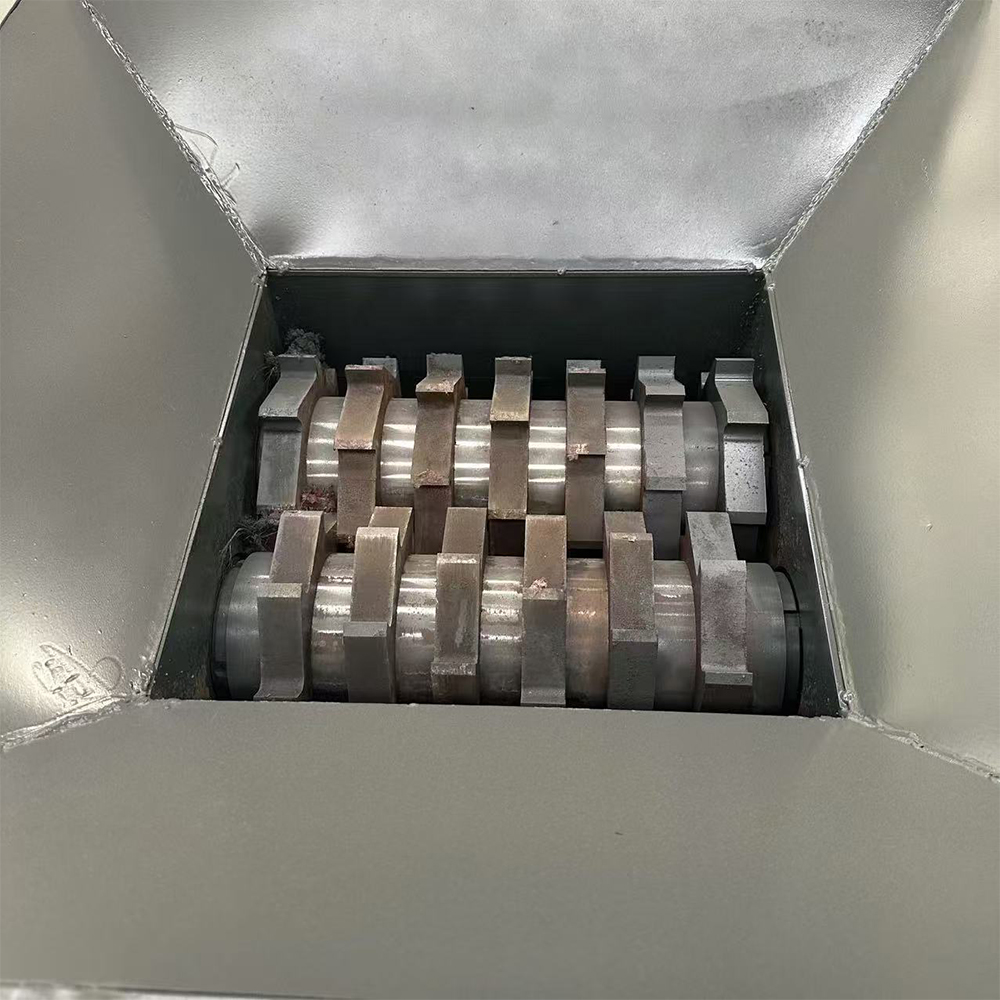
Addressing Blockages and Jams
Blockages occur when oversized or inappropriate materials clog the shredding chamber. Ignoring blockages risks damaging shafts, blades, and drive motors.
To resolve jams safely:
Immediately stop the machine using the emergency stop button
Disconnect power before entering the chamber
Remove obstructing material manually or with specialized tools
Inspect blades for wear or damage before restarting
Strict adherence to safety measures prevents injuries during blockage removal.
Cleaning Procedures After Use
Cleaning plays a major role in preventing buildup and extending equipment life. Residues of shredded material can cause corrosion, clogging, or microbial growth, depending on the processed material.
Cleaning steps may include:
Removing debris from cutting chambers and shafts
Vacuuming or blowing dust away from control panels
Wiping external surfaces to maintain hygiene standards
Ensuring hoppers and conveyors are free of leftover materials
Regular cleaning simplifies subsequent operations and minimizes unplanned downtime.
Routine Maintenance for Long-Term Reliability
Preventive maintenance ensures the shredder continues operating effectively. Operators should follow a disciplined schedule that covers mechanical, electrical, and safety systems.
Core maintenance tasks include:
Lubricating bearings and drive systems
Inspecting blade sharpness and replacing worn edges
Checking belt and chain tension
Inspecting electrical circuits and control panels
Tightening loose bolts and fasteners
Wuxi Songhu Xinrui Machinery Co., Ltd. emphasizes that timely blade replacement is critical for consistent shredding performance.
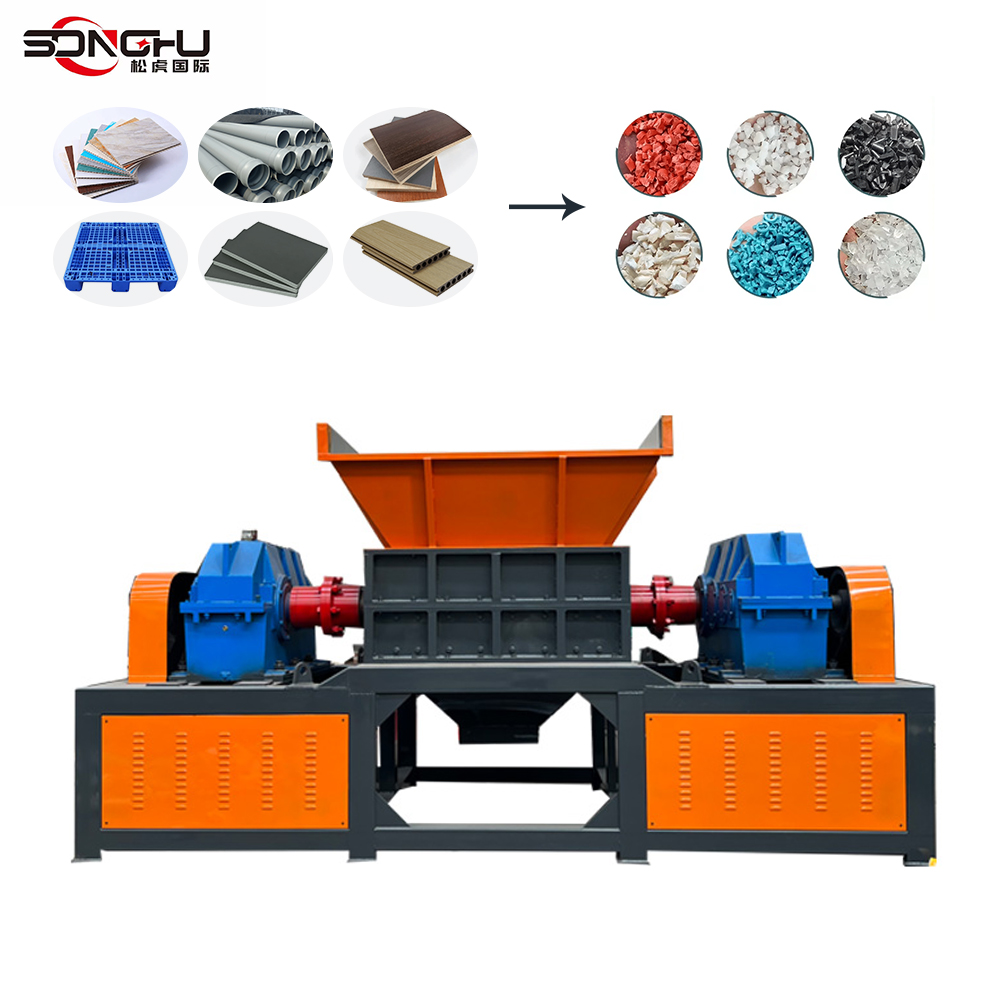
Managing Blade Wear and Replacement
Blades are the heart of a double shaft shredder. Over time, they wear down due to continuous shearing.
Symptoms of blade wear include:
Increased power consumption
Uneven shredded material sizes
Slower processing speeds
When these issues appear, operators must sharpen or replace blades according to manufacturer recommendations. Using genuine replacement parts ensures compatibility and reliability.
Ensuring Operator Safety at All Times
Safety protocols are fundamental to shredder operation. Machines of this scale can cause severe injury if mishandled.
Essential guidelines include:
Wearing protective clothing, gloves, and goggles
Never reaching into the shredder while power is connected
Following lockout-tagout procedures before maintenance
Keeping unauthorized personnel away from operation areas
A culture of safety guarantees both worker protection and machine integrity.
Troubleshooting Common Operational Problems
Even with proper care, double shaft shredders may experience operational issues. Common problems include:
Excessive noise: Usually linked to loose parts, worn bearings, or blade misalignment.
Overheating: May result from overloaded motors or poor lubrication.
Reduced output quality: Often caused by dull blades or uneven feeding.
Electrical faults: Can stem from damaged wiring or faulty control panels.
Documenting these issues and their solutions helps operators respond quickly if they recur.
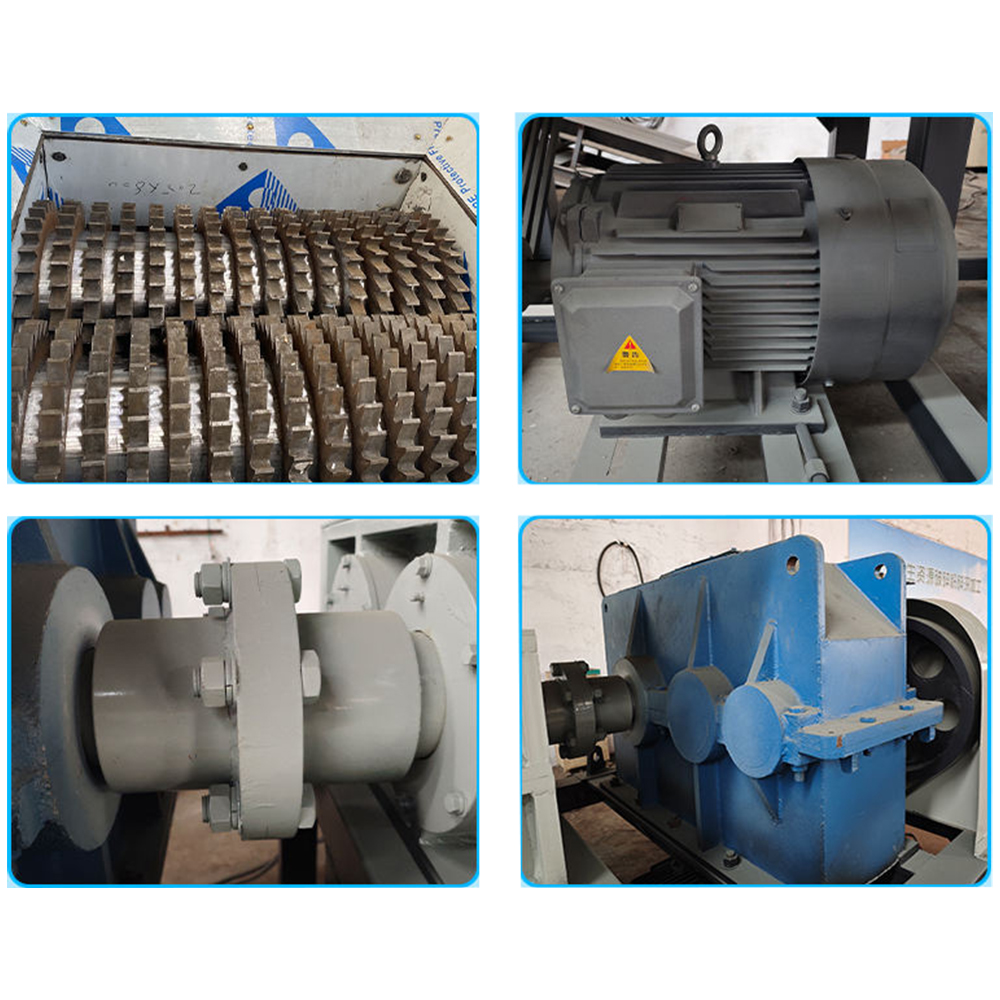
Integrating Double Shaft Shredders into Recycling Systems
Double shaft shredders are rarely used in isolation. They often serve as the first step in comprehensive recycling systems.
Effective integration may involve:
Pairing with conveyors for automated feeding
Linking with granulators for finer particle size reduction
Connecting to dust extraction systems for cleaner operation
Combining with sorting equipment for material stream separation
Through thoughtful integration, o
www.songhuxr.com
Wuxi Songhu Xinrui Machinery Co., Ltd.



